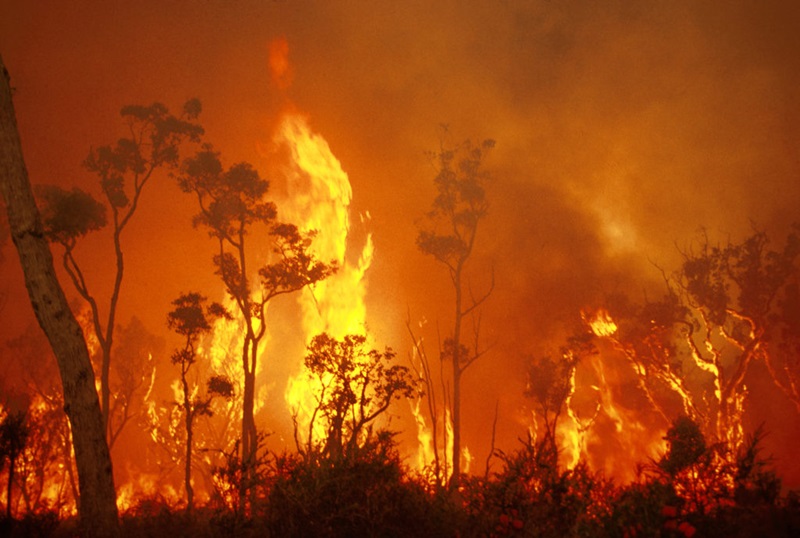Just How BAL Record Impacts Bush Fire Defense Actions
In the realm of bush fire defense, the Building Attack Level (BAL) report stands as an important tool that substantially affects the safety and strength of residential or commercial properties in fire-prone locations - BAL Report. The influence of a BAL assessment prolongs far beyond mere documents; it functions as the keystone for figuring out the appropriate building requirements and fire protection steps needed to alleviate the risks presented by bushfires. As areas face increasingly serious fire periods, recognizing just how the BAL record forms these protective actions ends up being extremely important for homeowners, building contractors, and policymakers alike
Understanding the Bushfire Strike Degree

Importance of BAL Record Analysis

Furthermore, the BAL record analysis offers as a fundamental action in adhering to lawful obligations and requirements connected to bushfire protection. Neighborhood councils and authorities frequently mandate the submission of a BAL record as component of the preparation and building approval procedure to ensure that homes are properly guarded versus bushfire threats. Falling short to conduct an extensive BAL report evaluation can result in poor defense actions, leaving properties prone to devastating bushfire cases.
Construction Standards Based Upon BAL
A comprehensive understanding of the Bushfire Attack Level (BAL) makes it possible for residential property proprietors to carry out building and construction requirements tailored to their details threat account. Building and construction requirements based on BAL are essential in reducing the influence of bushfires on residential properties. The BAL ranking classifies the prospective danger a building encounters during a bushfire on a range from BAL-Low to BAL-FZ (Fire Zone) Each BAL degree represents specific building and construction needs detailed in the Australian Common AS3959-2018 Building of Structures in Bushfire-Prone Areas. For example, homes classified as BAL-Low might just need standard procedures such as clearing particles and maintaining yards, while those in higher BAL groups need even more durable steps like cinder screens, fireproof materials, and secured home windows. Abiding by these construction requirements not just enhances the architectural resilience of the building but likewise enhances the total safety of citizens throughout a bushfire occasion. Residential property proprietors have to thoroughly consider their BAL score and conform with the matching building requirements to adequately secure their passengers and homes.
Carrying Out Fire Security Measures
With the foundation of building and construction criteria based upon Bushfire Attack Degree (BAL) in area, the emphasis currently moves towards the sensible execution of fire security actions to fortify residential or commercial properties versus bushfire risks. Implementing fire defense procedures includes a combination of passive and active techniques to boost the strength of structures in bushfire-prone areas. Passive measures include using fire-resistant structure materials, mounting cinder guards on vents, securing gaps in roofs and wall surfaces, and maintaining a clear room around the property devoid of combustible greenery. Energetic actions encompass having firefighting tools easily offered, such as hose pipes and water pumps, along with producing a defendable room around the home by getting rid of greenery and having a well-kept yard. In addition, creating an evacuation plan and making certain all residents recognize emergency situation procedures are critical parts of effective fire security steps. By incorporating both passive and energetic strategies, buildings can considerably decrease their vulnerability to weblink bushfire cases and raise the safety and security of occupants.
Shielding Homes Against Bushfires
Efficiently guarding homes versus the harmful impacts of bushfires calls for a extensive and aggressive approach to fire security measures. Homeowners living in bushfire-prone areas must focus on the implementation of different approaches to enhance their property's strength against wildfires. One essential element is producing a defensible space around the home by preserving a clear zone free of combustible products. This includes routinely trimming plants, removing dead plants, and making certain a safe distance between trees and frameworks. Installing fire-resistant roof covering materials can likewise dramatically lower the threat of cinder assaults and direct flame get in touch with. In addition, securing vents and voids to stop ash intrusion, as well as incorporating fire-resistant windows and doors, can assist strengthen the home's protection against bushfires. Investing in a trustworthy water source, such as a properly maintained lawn sprinkler or a dedicated water tank, is important for providing water throughout fire emergency situations - BAL Report. By welcoming an aggressive position and incorporating these safety actions, homeowners can considerably enhance their opportunities of safeguarding their homes against bushfires.
Verdict
Finally, the Bushfire Assault Level (BAL) record plays a crucial function in determining the necessary security measures versus bushfires. By assessing the BAL, building and construction requirements can be tailored to alleviate the threats and guarantee the safety and security of homes in fire-prone locations. Applying fire protection actions based on the BAL record is important in safeguarding residential or commercial properties Get the facts from possible bushfire threats. It is imperative for home owners to prioritize BAL evaluations and follow recommended building and construction standards to improve bushfire resilience.
In evaluating bushfire danger to buildings, understanding the Bushfire Strike Level (BAL) is an important part for executing efficient protection actions. Overall, a clear understanding of the Bushfire Assault Degree is vital for applying sufficient defense steps and minimizing the effect of bushfires on homes.

Comments on “Unlocking the Secrets of Bushfire Threat Evaluation: The Function of a BAL Report”